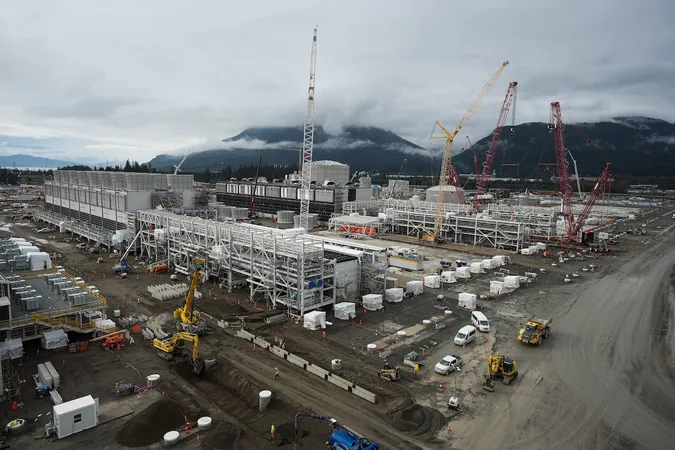
Canada's Economic Future: TC Energy CEO Eyes Asia for LNG Exports Amid U.S. Trade War
2025-04-10
Author: Benjamin
As the U.S. trade war casts shadows over the North American economy, TC Energy Corp.'s CEO, François Poirier, advocates for Canada to seize this pivotal moment to diversify its economic landscape by focusing on Asia, particularly in liquefied natural gas (LNG) exports.
In a thought-provoking address to the Canadian Club Toronto, which gained attention after being livestreamed, Poirier stressed the importance of unity among Canadian leaders—ranging from the Prime Minister to Indigenous representatives—to boost ties with Asia following the April 28 federal elections.
"We need to collectively market Canada as a reliable partner, showcasing our readiness for business," he declared. "It's essential for Asian markets to witness our sincerity and commitment to international trade."
Despite ranking as the world's fifth-largest natural gas producer, Canada currently has no operational LNG export terminals. However, the tide is set to turn with LNG Canada’s new terminal in Kitimat, British Columbia, expected to commence exports by mid-2025. This facility will be Canada’s inaugural LNG export terminal, with plans for an initial export capacity of 14 million tonnes annually.
A History of Missed Opportunities
Reflecting on the past, Poirier lamented that in 2013 Canada had over twenty proposals for LNG exports but failed to capitalize. Today, in a competitive global market with heavyweights like the U.S., Australia, and Qatar leading the charge, he acknowledged Canada’s struggle to keep pace.
As Canada looks to catch up, three significant BC projects are on the horizon: LNG Canada is aiming for mid-2025 launch, Woodfibre LNG targets late 2027, and Cedar LNG eyes achievement by late 2028. Furthermore, LNG Canada is contemplating a Phase 2 expansion.
Environmental and Political Challenges Ahead
The development of LNG export terminals faces hurdles, particularly the challenges surrounding the Coastal GasLink pipeline, which has faced resistance from Wet’suwet’en Nation hereditary chiefs despite agreements with elected councils. This predicament illustrates the complexities of resource management in the era of climate consciousness.
Amidst these developments, climate activists criticize financial institutions for their continued support of fossil fuel initiatives, warning of reputational risks associated with backing non-renewable projects. John Ridsdale, a notable climate activist, emphasized the potential jeopardy of banks like RBC in pursuing fossil fuel funding.
A Vision for a Sustainable Future
For Canada’s natural gas industry to move forward, the government mandates that LNG project proponents must demonstrate actionable plans to secure renewable energy sources. The B.C. Ministry of Energy and Climate Solutions has set a target for net-zero emissions from LNG facilities by 2030, although critics argue that meeting this goal is becoming increasingly elusive.
Projects like Ksi Lisims LNG, supported by the Nisga’a Nation, emphasize a commitment to sustainability by planning to use hydroelectric power instead of traditional gas-powered turbine models for liquefaction.
As we stand at this crossroads, the question remains: Will Canada harness its potential in the LNG sector and emerge as a leading exporter to Asia, or will it falter amidst the ongoing challenges posed by trade dynamics and climate change?









 Brasil (PT)
Brasil (PT)
 Canada (EN)
Canada (EN)
 Chile (ES)
Chile (ES)
 Česko (CS)
Česko (CS)
 대한민국 (KO)
대한민국 (KO)
 España (ES)
España (ES)
 France (FR)
France (FR)
 Hong Kong (EN)
Hong Kong (EN)
 Italia (IT)
Italia (IT)
 日本 (JA)
日本 (JA)
 Magyarország (HU)
Magyarország (HU)
 Norge (NO)
Norge (NO)
 Polska (PL)
Polska (PL)
 Schweiz (DE)
Schweiz (DE)
 Singapore (EN)
Singapore (EN)
 Sverige (SV)
Sverige (SV)
 Suomi (FI)
Suomi (FI)
 Türkiye (TR)
Türkiye (TR)
 الإمارات العربية المتحدة (AR)
الإمارات العربية المتحدة (AR)